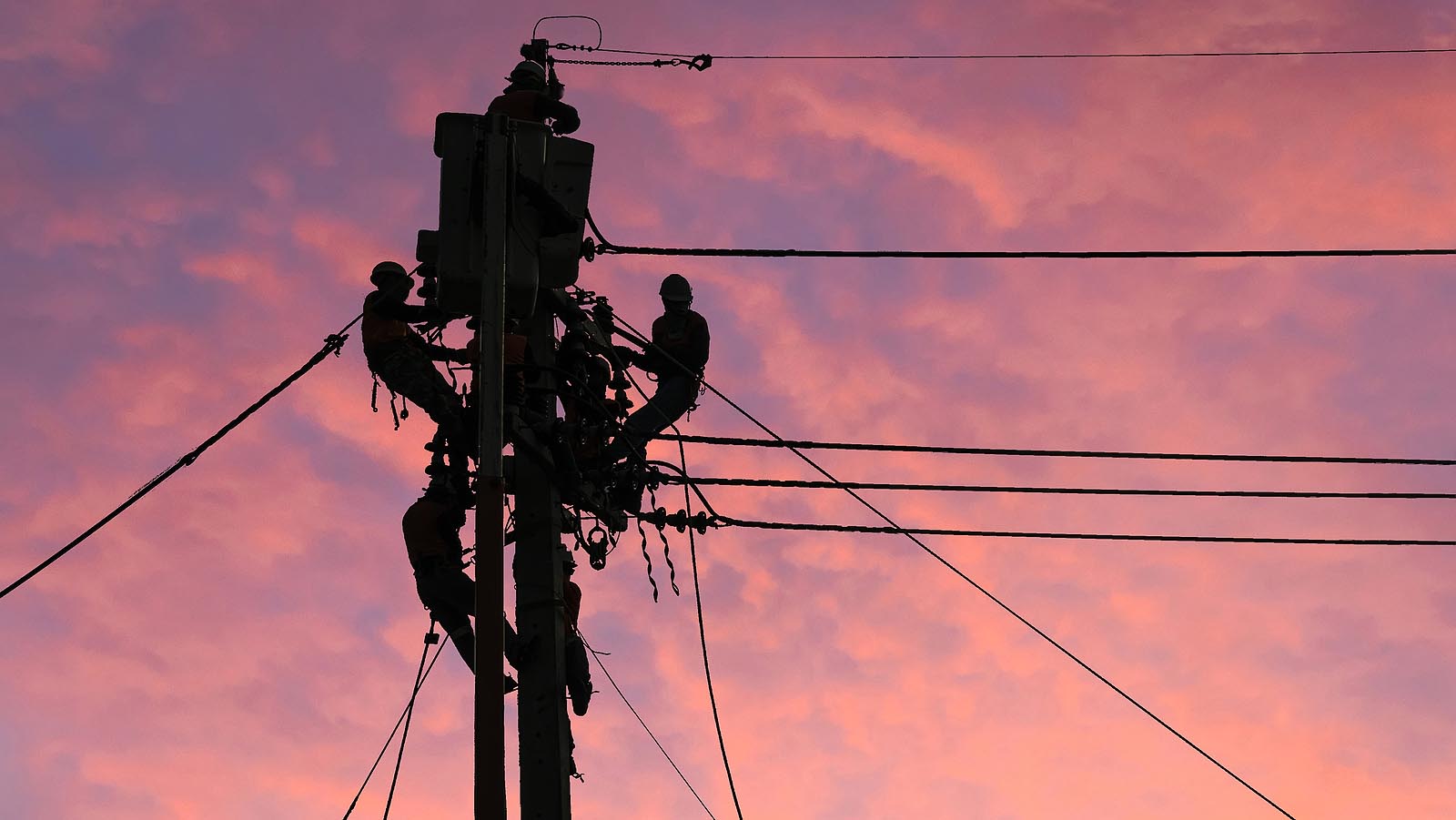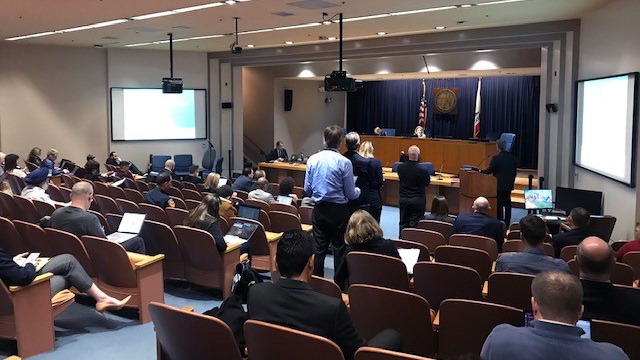Heres What Cruise, Waymo Are Saying About San Francisco Expansion Plans
Table Of Content
- Letters to the Editor: Automate everything? Driverless taxis mean more jobs taken from humans
- How a California vote on self-driving taxis could alter the future of AI
- Waymo Takes It Slow
- San Francisco-Sausalito ferry service suspended indefinitely
- CPUC votes to expand driverless car operations in San Francisco

Those incidents include multiple types of driving behavior, including unexpected stops, erratic driving, issues with pickup and drop-off, and collisions. If the CPUC vote goes through, each company will be allowed to expand its paid-passenger service to every corner of San Francisco 24/7, similar to Uber and Lyft. Cruise’s autonomous driving system is also currently being investigated by NHTSA.
Letters to the Editor: Automate everything? Driverless taxis mean more jobs taken from humans
"They are still not ready for prime time because of the way they have impacted our operations," San Francisco Fire Department Chief Jeanine Nicholson said during a four-hour hearing held Monday in advance of Thursday's pivotal vote. The vote to expand the use of robotaxis seemed like a certainty in May when the CPUC published a draft resolution, but vocal opposition from San Francisco officials has made for a bumpy ride for both companies since then. At a recent California Public Utilities Commission hearing with San Francisco fire and police officials, a Waymo spokesperson seemed to throw shade at Cruise’s statements about blanketing the city with thousands of robotaxis.
How a California vote on self-driving taxis could alter the future of AI
It currently offers a completely self-driven employee shuttle service in Foster City. Like its competitor Cruise, Waymo has opened up services to Phoenix and laid out plans to make the entire San Francisco peninsula open to its robotaxis. Waymo said Los Angeles will be the newest testing ground for robotaxis. “We want our vehicles to improve road safety and to contribute to the city’s economic recovery and its Vision Zero goal of no street fatalities,” she said. If Waymo and Cruise lose next week, some in the tech community fear they’d leave San Francisco or at least scale back, hurting the city’s place as the center of AI technology.
Waymo Takes It Slow
"AVs are not the solution for safety at all. The fire department hates them. I can't imagine there being 10 times more AVs out there," said opponent Michael Smith. "And so it's really critical that we actually look at real safety and not just claimed safety by having a yellow shirt on." The vote on the expanded service for the two companies was postponed twice this summer. In previous interviews with ABC7 News, Cruise and Waymo have said they don't plan on immediately adding any new vehicles to the network, but will slowly increase their fleets.
Robotaxis are now allowed in San Francisco, whether locals want it or not - The Washington Post
Robotaxis are now allowed in San Francisco, whether locals want it or not.
Posted: Thu, 10 Aug 2023 07:00:00 GMT [source]
San Francisco-Sausalito ferry service suspended indefinitely
During five-and-half hours of public comments at Thursday’s meeting, many speakers derided the robotaxis as annoying nuisances at best and dangerous menaces at worst. Others vented their frustration about San Francisco being transformed into a “tech playground” and the equivalent of an “ant farm” for haphazard experimentation. During the first four hours of public comments at Thursday's meeting, many speakers derided the robotaxis as annoying nuisances at best and dangerous menaces at worst. Others vented their frustration about San Francisco being transformed into a "tech playground" and the equivalent of an "ant farm" for haphazard experimentation.
Both companies have operations in other cities, including Austin and Phoenix. Russ Mitchell covers the epic transition to electric vehicles and energy storage for the Los Angeles Times, blending technology, policy and consumerism, with a particular focus on California. According to Cruise’s data, from January 1 to July 18, 2023, there were 177 VREs, and of those, 26 occurred when a passenger was in a vehicle.
Waymo to launch robotaxi service in Los Angeles, but no freeway driving — for now
“This is a technology built right here in San Francisco that will change the world, yet some of the most ideologically driven elected officials want to stamp it out. The DMV said another government agency alerted it to the missing footage, prompting it to request the full video from Cruise, which the company provided on October 13. John Reynolds, who came to the CPUC after serving as top lawyer at Cruise, said safety is the DMV‘s concern.
Here’s what Cruise, Waymo are saying about San Francisco expansion plans

Tracy McCray, the union president, cited a robotaxi obstructing emergency vehicles responding to a recent mass shooting that injured nine people as a chilling example of how the technology could imperil the public. Supporters of the robotaxis also stepped up to passionately defend the technology as a leap forward that will keep San Francisco on the cutting edge of technology while reducing the risks posed by drunk driving. One speaker predicted that unleashing the robotaxis would create a tourist attraction that could become as popular as rides on the fabled cable cars that have been navigating the city's streets for 150 years. Before the Thursday vote, Waymo operated roughly 100 autonomous cars on San Francisco roads at a given time, with 250 total active vehicles. Ridership in early August reached roughly 10,000 fully autonomous trips with passengers per week, according to the company.
On a recent Friday evening, a driverless car pulled up alongside an outdoor dining shed in the Mission district of San Francisco, put on its hazard lights, and waited. As traffic began to pile up behind the vehicle, a man smoking a cigarette outside a nearby bar rolled his eyes. “The companies have mostly denied all of our data requests around performance,” he said. The mood was polite but charged over six-and-a-half hours of public testimony preceding the votes, as scores of people argued for and against. "We can't wait for more San Franciscans to experience the mobility, safety, sustainability and accessibility benefits of full autonomy for themselves — all at the touch of a button," Waymo co-CEO Tekedra Mawakana said in a blog post.
Police could request footage from those cameras to investigate crimes or to violate residents’ privacy, advocates say. Waymo has received some requests for camera footage from law enforcement agencies but says it generally requires a warrant or court order. The decision by state regulators followed months of protest by San Francisco officials, unions and civic groups. Supervisor Aaron Peskin says options include filing for a re-hearing, and engaging further with the DMV, state lawmakers and federal regulators.
The CPUC also regulates taxi and ride-hail services, giving it the final say in whether Waymo and Cruise could roll out their business model for self-driving cars full-time. Cruise has been currently testing 300 robotaxis during the day when it can only give rides for free, and 100 robotaxis at night when it has been allowed to charge for rides in less congested parts of San Francisco for the past 14 months. Waymo has been operating about 100 of the 250 robotaxis it has available to give free rides to volunteers and employees throughout San Francisco.
And, to be fair, it all depends on how smoothly the vehicles integrate themselves into the city. Waymo operates at all hours of the day but can’t charge for its driverless rides, while Cruise can charge passengers, but only from 10 p.m. Cruise is available to the public everywhere but San Francisco’s hilliest areas, such as Twin Peaks, while Waymo is open to the public in all but The City’s northeast neighborhoods. Still, in a recent New York Times interview, Cruise CEO Kyle Vogt said it wasn’t too soon to think about what might happen to the jobs of today’s professional drivers, some of whom asked the CPUC to block robotaxi expansion during comments before the vote. Vogt said Cruise has a responsibility to warn government and regulators that its technology is set to disrupt the lives of people who make a living behind the wheel.

Sure, people grow rankled when they’re made to sit in traffic because a Ghost Car can’t figure out what to do. But, by and large, San Franciscans are adept at growing inured to bizarre and unfortunate situations. So city residents may yet have a Bastille Day-like reaction to increasing numbers of autonomous vehicles coursing through the city.
Self-driving taxis have become the latest flashpoint for conflict in San Francisco between the city’s wealthy, assertive technologists and the anti-corporate, progressive coalition that has a deep influence on local politics. The NHTSA is also investigating Cruise in regards to this event, plus a number of other incidents such as Cruise’s collision with an emergency vehicle and dozens of instances of robotaxis malfunctioning and blocking traffic and first responders. City officials fought hard to delay an expansion until the companies could figure out how to program their vehicles to prevent interference with first responders. They won a two-month delay, but on Thursday the CPUC made its decision. Opponents, meanwhile, won an acknowledgment that their concerns are real. Most of the city agencies that spoke during Monday’s meeting with the CPUC agree that AV technology has the potential to save lives, improve traffic and reduce greenhouse gas emissions — just not quite yet.
Soon, anyone in the city might be able to hail a driverless car with a few taps of a phone. And San Francisco cab and ride-hail drivers will have new, automated competition. The companies have defended themselves, noting that they are in communication with city officials about ways to improve to avoid future incidents. They also note that no one has been seriously hurt or killed by an autonomous vehicle in San Francisco, while many people are killed every year by human-driven ones.
Until now, robotaxis have been able to operate with time and location restrictions in San Francisco, but now anyone who downloads the Cruise or Waymo apps can use the service. Hundreds of members of the public came to speak out for and against the expansion of robotaxi service in San Francisco. In February, Zoox was granted permission by the state Department of Motor Vehicles to operate its cars on public roads.
Comments
Post a Comment